French Dishes Named After Actual Places in France
“What’s in a name?” Shakespeare famously quipped. A lot, it turns out, when it comes to naming dishes.
When I first moved to Paris, food was one of the ways I inadvertently came to learn about the geography of France. Well, who am I kidding! By “food,” I mean cheese and wine. I had tasted many a sip of a well-bodied Bourgogne and Gaillac, and eaten globs of Bethmale, Rocamadour and Comté before I had ever set foot in any of these places in France.
In due time, I came to learn about the impressive variety of regional dishes in France, particularly as I had the good luck to travel widely throughout the country. Exploring France’s diverse regions, I learned some delightful anecdotes and legends about foods named after actual places.
Join me in a little (culinary) armchair travel around some of the most beautiful regions of France, through the foods that have been named after them. Note that the stories I tell here are condensed versions of the histories associated with their creation and nomenclature. The history of these dishes is much more complex, rich and sometimes controversial than I have the space (and let’s face it, the expertise) here to discuss.
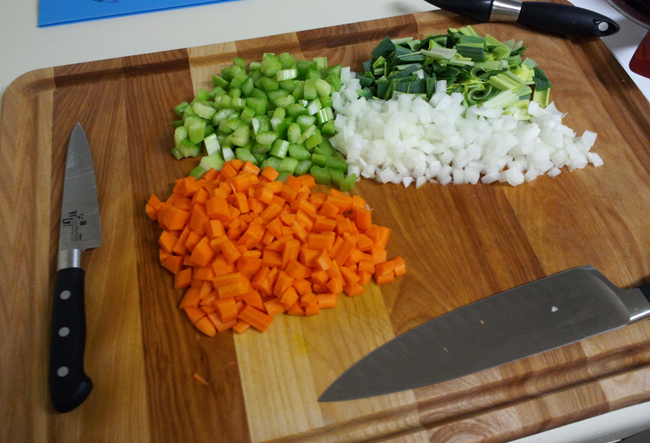
Uncooked mirepoix on a cutting board, with the addition of leeks. Photo: Pigup/Wikimedia Commons
Mirepoix
The holy trinity of carrot, onion and celery is considered the foundation of French cooking. Well, that’s basically what the dish mirepoix is! To make a mirepoix, all you need to do is sauté the three in butter or oil (purists might debate what’s more authentic). This base is then used at the starting point for iconic French dishes such as coq au vin or stews.
The name of the dish actually originates from the town of Mirepoix in the south of France. Legend has it that it’s named for the 18th-century French nobleman, Charles-Pierre-Gaston François de Lévis, Duke of Mirepoix. It was in his kitchen that this dish is supposed to have been first concocted.
However, similar or equivalent dishes have existed since long before this time, with variations of it also found in Italian and German cuisine.
The town of Mirepoix itself still thrives as a center for arts and architecture. With its half-timbered houses and long wooden galleries, Mirepoix is worth a stop if you ever find yourself around Toulouse or Carcassonne.

Mirepoix in the Ariège. Photo credit: BastienM / Wikimedia commons
Quiche Lorraine
Quiche Lorraine is a popular dish found in most boulangeries and brasseries in France. It’s especially perfect for a quick lunch. This savory tart is made with a filling of cream, eggs, and bacon or ham. This is then poured over an open pastry and baked.
The word quiche actually comes from the German word kuchen (meaning cake), while the word Lorraine refers to the beautiful region in the northeast of France. The historical region of Alsace-Lorraine features a distinctive culture, food and language that’s a result of the historical power struggle between Germany and France.
The quiche Lorraine is believed to date back to the 16th century. It was only in the middle of the 20th century that it started getting popular outside of Lorraine. Today it’s eaten all over France and abroad.
If you are in Paris and fancy having some quiche Lorraine in a charming setting, head to the Café de Flore in Saint Germain, or grab one on the go from Patisserie Stohrer, which is the city’s oldest pastry shop.
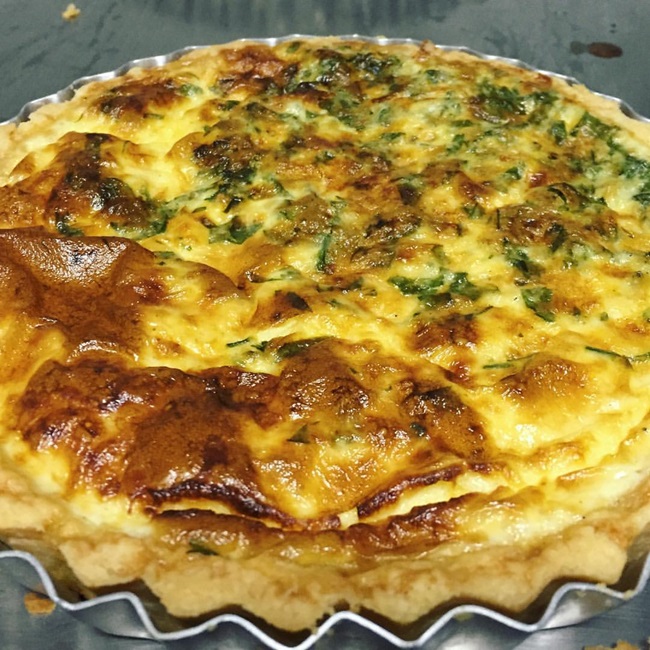
Quiche Lorraine. Photo: Gabriel Torres/Flickr
Salade Niçoise
If you want to couple your quiche with a salad, what better accompaniment than salade niçoise. For me, and I am sure, many of you, this salad evokes the taste of summer, of sunny, blue skies and lazy lunches on holidays. That, or maybe I am just missing summer terribly and need a beach vacation yesterday.
Salade Niçoise is made with a mix of lettuce, onion, tomatoes, and eggs, with its most distinctive ingredients being anchovies, olives and capers. It’s the perfect blend of the taste of the sea and summer.
As you might already know, this salad is named after the French city of Nice. In fact, the origin of the dish dates back to the 19th century, when it used to be a poor person’s food. Today however, this dish has been the subject of numerous controversies over what exactly should constitute the ingredients of a :real” Niçoise salad.
You can try a Niçoise salad with tuna at Le Nemours, just outside the Palais Royale. It is also possible to find it at other restaurants that serve Provençal fare in Paris.
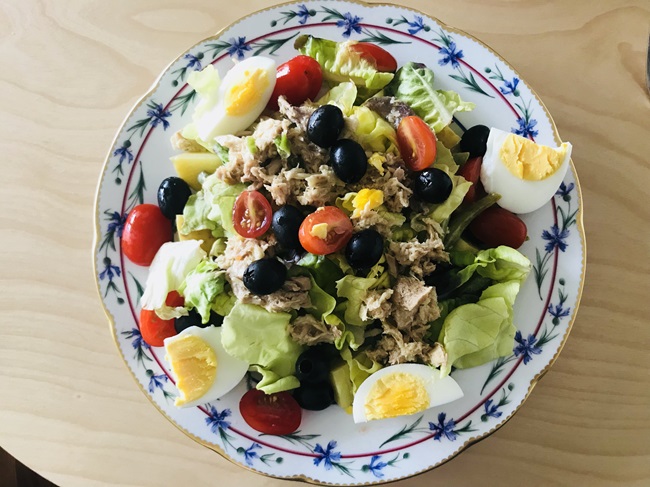
Salade Niçoise. Photo: Hamburger Helper/Flickr
Boeuf Bourguignon
Boeuf Bourguignon, the rich dish of beef cooked in red wine, broth, onions, mushrooms, and herbs, might be as iconic a French cultural symbol as berets, baguettes and croissants.
Legend has it, boeuf bourguignon emerged as a peasant dish, born out of necessity rather than culinary innovation. The dish refers to the French region of Burgundy, famous globally for its fine wines, with Bourguignon translating to “of Bourgogne.”
Back in the day, Burgundian peasants needed a way to tenderize tough cuts of beef, and came up with the genius solution of slow-cooking it in wine. In fact, today to add the term bourguignon, after any food implies it had been cooked in wine. Boeuf bourguignon is traditionally eaten with a side of boiled or mashed potatoes.
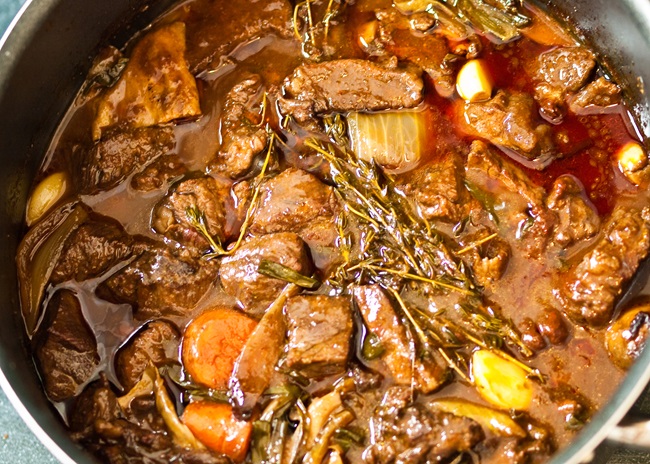
Boeuf bourguignon. Photo: Alan C./Flickr
Boeuf bourguignon got its big break thanks to French culinary icon, Georges Auguste Escoffier (1846- 1945). He was a restaurateur and culinary writer, who was instrumental in shining the spotlight on many French traditional dishes, making them fashionable enough to be served at elegant restaurants. Escoffier is in fact called the “king of chefs,” and credited with revolutionizing French cuisine.
Today, boeuf bourguignon is a staple of French cuisine, served in bistros and homes alike. In Paris, most restaurants serving traditional French fare generally have boeuf bourguignon on their menus. You can sample it both at any of the pocket-friendly Bouillon Chartier addresses or in a more refined setting at La Fontaine de Mars.
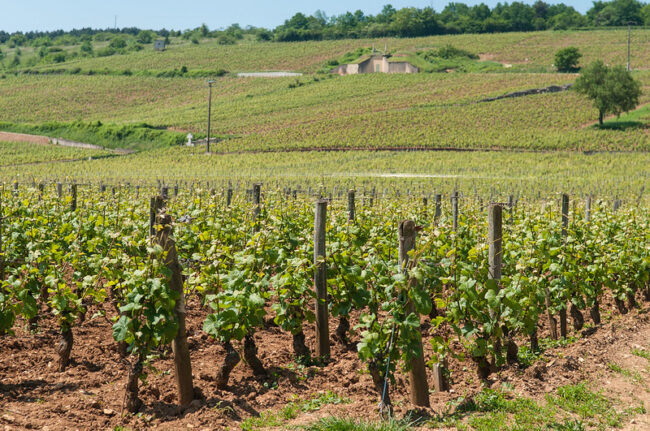
Romanée-Conti vineyard in Burgundy. Photo credit: Anna & Michal/ Flickr
Paris Brest
This brings me to the end of our meal, and to my favorite part: dessert! And what better way to finish this trans-country meal than with the iconic Paris Brest. If you haven’t tried this dessert already, the Paris Brest is made with choux pastry with a creamy praline filling. It’s like biting into a cloud of sweetness with a nutty twist.
While there’s no doubt that you figured out the city associated with the dessert – Paris, duh! – many people might not be aware that the latter part of the name refers to the decidedly humbler port city of Brest, in Brittany.

Poster advertising Paris-Brest, showing 1901 winner Maurice Garin. Public domain
As per a popular anecdote, the Paris Brest was created in 1910 by pastry chef Louis Durand to commemorate the Paris-Brest-Paris bicycle race. Durand even shaped his creation like a bicycle wheel, filling it with praline cream. Some say the pastry’s circular shape was inspired by the bicycle wheels themselves, while others insist it’s a nod to the circular route of the race, that started and ended in Paris.
Leave it to the French to invent a delicious pastry on the occasion of a sporting event! But we’re all the more thankful for it.
Almost every patisserie in Paris makes their own version of the Paris Brest. My favorite ones are by Yann Couvreur. Maison Landemaine also has a unique take on the dessert serving a deconstructed Paris Brest in a cup.
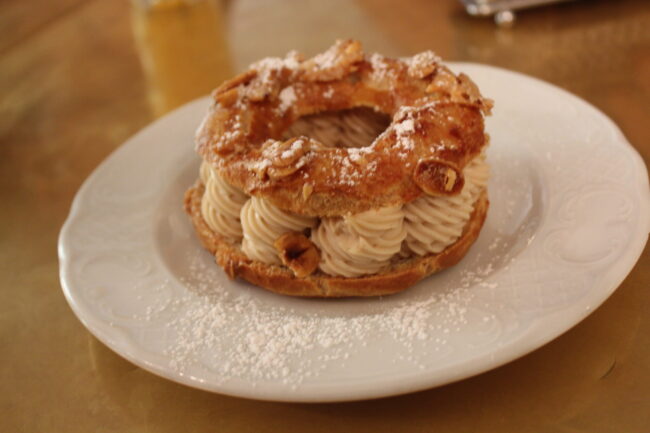
Paris Brest. Wikimedia commons
Lead photo credit : Paris Brest. Photo: Robyn Lee/Flickr
More in food in Paris, French food




